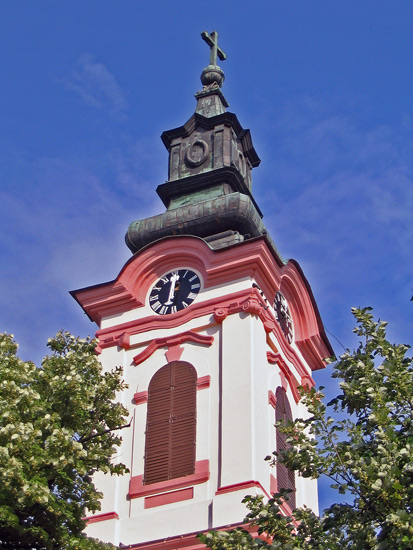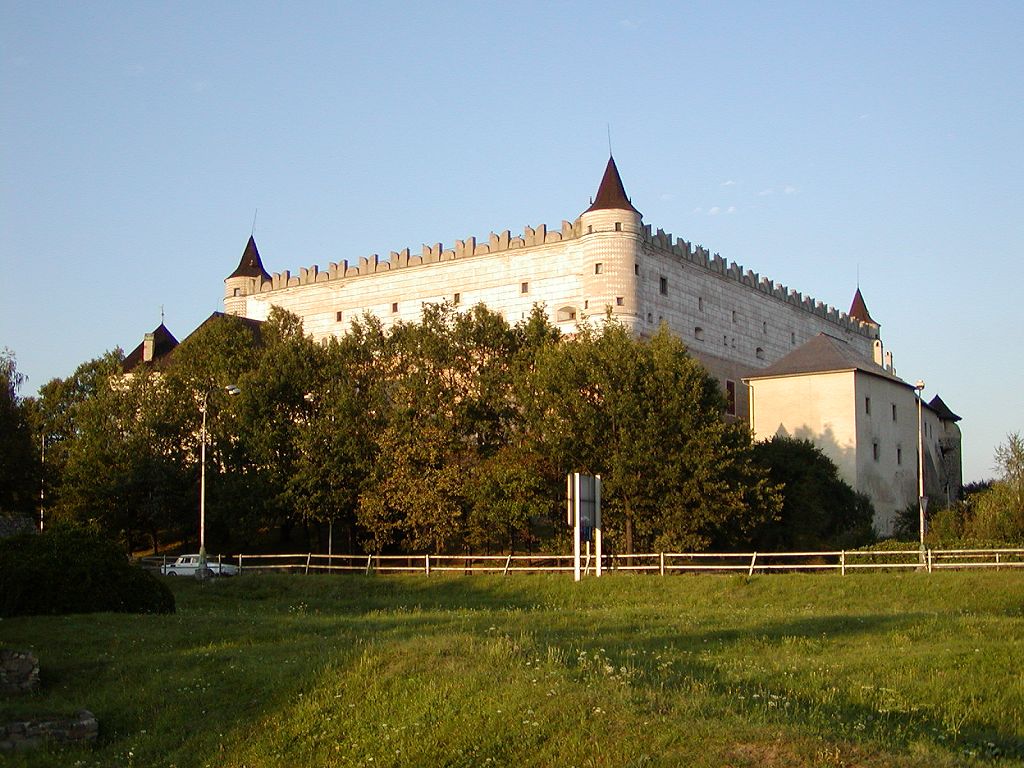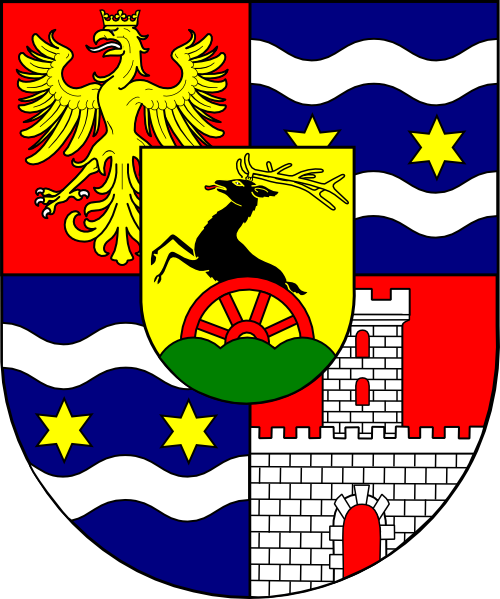|
Erzsébet Czobor
Baroness Erzsébet Czobor de Czoborszentmihály (1572 – 31 March 1626) was the second wife of Palatine György Thurzó. Biography Her parents were Imre Czobor, who served as Palatinal Governor of Hungary between 1572 and 1581, and his third wife, Borbála Perényi de Perény. Thurzó and Erzsébet married on 2 February 1592 in ''Sasvár'' (today part of Šaštín-Stráže, Slovakia). They had several children: *János, died young *Borbála, she married twice: **30 September 1612: Count Kristóf Erdődy de Monyorókerék et Monoszló (d. 1621) **29 January 1629 ( Zólyom): Count János Draskovich de Trakostyán, Palatine of Hungary (1646–1648) *Ilona, married to Count Gáspár Illésházy (d. 1648) *Imre (11 September 1598 – 19 October 1621), Perpetual Ispán (Count; ''comes'') of Árva County and Rector of the University of Wittenberg (1616–1621), the last male member of the Thurzó family Thurzó ( sk, Turzo; pl, Turzonowie) was a Hungarian noble family from the 15 ... [...More Info...] [...Related Items...] OR: [Wikipedia] [Google] [Baidu] |
Sombor
Sombor ( sr-Cyrl, Сомбор, ; hu, Zombor; rue, Зомбор, Zombor) is a List of cities in Serbia, city and the administrative center of the West Bačka District in the autonomous province of Vojvodina, Serbia. The city has a total population of 47,623 (), while its administrative area (including neighboring villages) has 85,903 inhabitants. Name and etymology In Serbian language, Serbian, the city is known as ''Sombor'' (Сомбор), in Hungarian language, Hungarian and German language, German as ''Zombor'', in Croatian language, Croatian and Bunjevac language, Bunjevac as ''Sombor'', in Pannonian Rusyn language, Rusyn as ''Zombor'' (Зомбор), and in Turkish language, Turkish as ''Sonbor''. The older Hungarian name for the city was ''Czoborszentmihály''. The name originates from the Czobor family, who were the owners of this area in the 14th century. (The family name came from the Slavic name ''Cibor''.) The Serbian language, Serbian name for the city ''(Sombor)' ... [...More Info...] [...Related Items...] OR: [Wikipedia] [Google] [Baidu] |
Ivan III Drašković
Ivan III Drašković ( en, John III Drashkovich of Trakoshtyan; hu, trakostyáni gróf Draskovich János, ( Trakošćan, 13 March 1595(?) or 1603 – Óvár (Kingdom of Hungary), 5 August 1648), was a Croato- Hungarian warrior and statesman, a member of the Drašković noble family. He served as Palatine of Hungary from 1646 until his death. Biography Family and education Count Ivan III Drašković was a son of Ivan II Petar Drašković and his wife Eva Drašković née Istvánffy. Educated in Graz, Austria, where he finished philosophy studies, and in Bologna, Italy, where he graduated in law, Drašković spoke several foreign languages. He was also enrolled at the Classical gymnasium in Zagreb.Goldstein, Ivo - Szabo, Agneza, Povijest zagrebačke Klasične gimnazije (1607. - 2007.), Zagreb, 2007., str. 22, On 29 January 1629 he married Barbara Thurzó, a Hungarian countess, and they had five children, among which two sons, John IV and Nicholas II. Political and mili ... [...More Info...] [...Related Items...] OR: [Wikipedia] [Google] [Baidu] |
1621 Deaths
Sixteen or 16 may refer to: *16 (number), the natural number following 15 and preceding 17 *one of the years 16 BC, AD 16, 1916, 2016 Films * '' Pathinaaru'' or ''Sixteen'', a 2010 Tamil film * ''Sixteen'' (1943 film), a 1943 Argentine film directed by Carlos Hugo Christensen * ''Sixteen'' (2013 Indian film), a 2013 Hindi film * ''Sixteen'' (2013 British film), a 2013 British film by director Rob Brown Music *The Sixteen, an English choir *16 (band), a sludge metal band * Sixteen (Polish band), a Polish band Albums * ''16'' (Robin album), a 2014 album by Robin * 16 (Madhouse album), a 1987 album by Madhouse * ''Sixteen'' (album), a 1983 album by Stacy Lattisaw *''Sixteen'' , a 2005 album by Shook Ones * ''16'', a 2020 album by Wejdene Songs * "16" (Sneaky Sound System song), 2009 * "Sixteen" (Thomas Rhett song), 2017 * "Sixteen" (Ellie Goulding song), 2019 *"16", by Craig David from ''Following My Intuition'', 2016 *"16", by Green Day from ''39/Smooth'', 1990 *"16", by ... [...More Info...] [...Related Items...] OR: [Wikipedia] [Google] [Baidu] |
1572 Births
Year 157 ( CLVII) was a common year starting on Friday (link will display the full calendar) of the Julian calendar. At the time, it was known as the Year of the Consulship of Civica and Aquillus (or, less frequently, year 910 '' Ab urbe condita''). The denomination 157 for this year has been used since the early medieval period, when the Anno Domini calendar era became the prevalent method in Europe for naming years. Events By place Roman Empire *A revolt against Roman rule begins in Dacia. Births * Gaius Caesonius Macer Rufinianus, Roman politician (d. 237) * Hua Xin, Chinese official and minister (d. 232) * Liu Yao, Chinese governor and warlord (d. 198) * Xun You Xun You (157–214), courtesy name Gongda, was a statesman who lived during the late Eastern Han dynasty of China and served as an adviser to the warlord Cao Cao. Born in the influential Xun family of Yingchuan Commandery (around present- ..., Chinese official and statesman (d. 214) Deat ... [...More Info...] [...Related Items...] OR: [Wikipedia] [Google] [Baidu] |
Imre Thököly
Imre is a Hungarian masculine first name, which is also in Estonian use, where the corresponding name day is 10 April. It has been suggested that it relates to the name Emeric, Emmerich or Heinrich. Its English equivalents are Emery and Henry. Bearers of the name include the following (who generally held Hungarian nationality, unless otherwise noted): *Imre Antal (1935–2008), pianist *Imre Bajor (1957–2014), actor * Imre Bebek (d. 1395), baron *Imre Bródy (1891–1944), physicist * Imre Bujdosó (b. 1959), Olympic fencer *Imre Csáky (cardinal) (1672–1732), Roman Catholic cardinal * Imre Csermelyi (b. 1988), football player *Imre Cseszneky (1804–1874), agriculturist and patriot *Imre Csiszár (b. 1938), mathematician * Imre Csösz (b. 1969), Olympic judoka *Imre Czobor (1520–1581), Noble and statesman *Imre Czomba (b. 1972), Composer and musician *Imre Deme (b. 1983), football player *Imre Erdődy (1889–1973), Olympic gymnast * Imre Farkas (1879–1976), musician ... [...More Info...] [...Related Items...] OR: [Wikipedia] [Google] [Baidu] |
University Of Wittenberg
Martin Luther University of Halle-Wittenberg (german: Martin-Luther-Universität Halle-Wittenberg), also referred to as MLU, is a public, research-oriented university in the cities of Halle and Wittenberg and the largest and oldest university in the German state of Saxony-Anhalt. MLU offers German and international (English) courses leading to academic degrees such as BA, BSc, MA, MSc, doctoral degrees, and Habilitation. The university was created in 1817 through the merger of the University of Wittenberg (founded in 1502) and the University of Halle (founded in 1694). MLU is named after Protestant reformer Martin Luther, who was a professor in Wittenberg. Today, the university campus is located in Halle, while ''Leucorea Foundation'' in Wittenberg serves as MLU's convention centre. Both Halle and Wittenberg are about one hour from Berlin via the Berlin–Halle railway, which offers Intercity-Express (ICE) trains. History University of Wittenberg (''Universität Wittenbe ... [...More Info...] [...Related Items...] OR: [Wikipedia] [Google] [Baidu] |
Rector (academia)
A rector (Latin for 'ruler') is a senior official in an educational institution, and can refer to an official in either a university or a secondary school. Outside the English-speaking world the rector is often the most senior official in a university, whilst in the United States the most senior official is often referred to as president and in the United Kingdom and Commonwealth of Nations the most senior official is the chancellor, whose office is primarily ceremonial and titular. The term and office of a rector can be referred to as a rectorate. The title is used widely in universities in EuropeEuropean nations where the word ''rector'' or a cognate thereof (''rektor'', ''recteur'', etc.) is used in referring to university administrators include Albania, Austria, the Benelux, Bosnia and Herzegovina, Bulgaria, Croatia, Cyprus, Czech Republic, Denmark, Estonia, Finland, Germany, Greece, Hungary, Iceland, Italy, Latvia, Malta, Moldova, North Macedonia, Poland, Portugal, Romani ... [...More Info...] [...Related Items...] OR: [Wikipedia] [Google] [Baidu] |
Árva County
Árva County ( hu, Árva vármegye, la, Comitatus Arvensis, sk, Oravská stolica/župa, german: Komitat Arwa, pl, Komitat Orawa) was an administrative county (comitatus) of the Kingdom of Hungary since the 14th century until 1920. Its territory is now in northern Slovakia and southern Poland. Today, the Slovak name is only used as an informal designation of the corresponding territory (see Orava region). Geography Between 1804-1854 and 1860-1920, Árva County shared borders with Austrian Galicia and the Hungarian counties of Trencsén, Turóc and Liptó County. The county's territory was situated along the Árva (Orava) river between Zázriva (Zázrivá) and the Tatra mountains. Its area was 2,019 km² around 1910. Now the territory is divided between Poland and Slovakia. The main Polish town of Orava is Jabłonka. Capitals The county seat was at the Orava Castle (Hungarian: Árva vára). After the destruction of the town by the Lithuanian troops in 1683, the seat ... [...More Info...] [...Related Items...] OR: [Wikipedia] [Google] [Baidu] |
Perpetual Ispán
A perpetual count ( hu, örökös főispán, la, supremus et perpetuus comes)Nemes 1989, p. 81. was a head or an ''ispán'' of a county in the Kingdom of Hungary (“Lord Lieutenant”) whose office was either hereditary or attached to the dignity of a prelate or of a great officer of the realm. The earliest examples of a perpetual ''ispánate'' are from the 12th century, but the institution flourished between the 15th and 18th centuries. Although all administrative functions of the office were abolished in 1870, the title itself was preserved until the general abolition of noble titles in Hungary in 1946. History List of perpetual ''ispánates'' Ex officio ''ispánates'' Hereditary ''ispánates'' See also * County (Kingdom of Hungary) * Ispán The ispánRady 2000, p. 19.''Stephen Werbőczy: The Customary Law of the Renowned Kingdom of Hungary in Three Parts (1517)'', p. 450. or countEngel 2001, p. 40.Curta 2006, p. 355. ( hu, ispán, la, comes or comes parochi ... [...More Info...] [...Related Items...] OR: [Wikipedia] [Google] [Baidu] |
Zvolen
Zvolen (; hu, Zólyom; german: Altsohl) is a town in central Slovakia, situated on the confluence of Hron and Slatina rivers, close to Banská Bystrica. It is surrounded by Poľana mountain from the East, by Kremnické vrchy from the West and by Javorie and Štiavnické vrchy from the South. Zvolen is a seat of a county (Zvolen District). It is also an important transportation hub in Slovakia. Etymology The name is of Slovak (Slavic) origin meaning "the chosen one, splendid, excellent". The Hungarian ' and the German ' were derived from the Latinized form ' (earliest mention 1135). An adjective "Old" (german: Altsohl, sk, Starý Zvolen, la, Antiquum or Vetus Solium) distinguish Zvolen from Banská Bystrica (german: Sohl, Neusohl). History Zvolen has been inhabited since the Paleolithic. In the ninth century, a Slavic settlement (today the Môťová neighborhood) became a regional center of what is now central Slovakia. Zvolen remained the capital of Zólyom County unt ... [...More Info...] [...Related Items...] OR: [Wikipedia] [Google] [Baidu] |
Thurzó Family
Thurzó ( sk, Turzo; pl, Turzonowie) was a Hungarian noble family from the 15th century to the first half of the 17th century. It was in Kraków that the rise of the Thurzó family began, and the family in turn boosted that city into an important center of business, science, and Renaissance high culture. The family's long-term involvement in capitalist enterprises, high-level politics, the affairs of the Church, and its patronage of the arts made the family rich, famous and powerful well beyond the city. Its achievements resembled the Medici family in Italy and France, perhaps the Fugger family in Germany. Key family patriarchs were János Thurzó (1437–1508) and his sons János V (1466–1520), bishop of Wrocław, and Stanislav I (1471–1540), bishop of Olomouc, and Palatine György who founded town Turzovka. Karen Lambrecht argues that the family's most important role was in facilitating "intercultural communications." That is they used their vast network of friends, cli ... [...More Info...] [...Related Items...] OR: [Wikipedia] [Google] [Baidu] |
Erdődy
The House of Erdődy de Monyorókerék et Monoszló (also House of Erdödy) is the name of an old Hungarian- Croatian noble family with possessions in Hungary and Croatia. Elevated to the Hungarian nobility in 1459, the family was subsequently raised to the rank of Count in 1485. In 1565, the family was then recognised by the Habsburg monarchy, which granted them the title ''Reichsgraf / Gräfin''. The family was raised again in 1566 to the rank of Reichfürst; but the death the following year of the recipient (Péter II) prevented the title from being registered and so it did not become hereditary. History The family was first raised in a document dated 1187, under the name of ''Bakoch de genere Erdewd''. It received the title of Count in 1485. (The first hereditary count in Hungary was John Hunyadi in 1453 by King Ladislaus V).The family's origins were from the town of Erdőd ( ro, Ardud, german: link=no, Erdeed) which is in Szatmár (now Satu Mare, Romania). They are baro ... [...More Info...] [...Related Items...] OR: [Wikipedia] [Google] [Baidu] |







